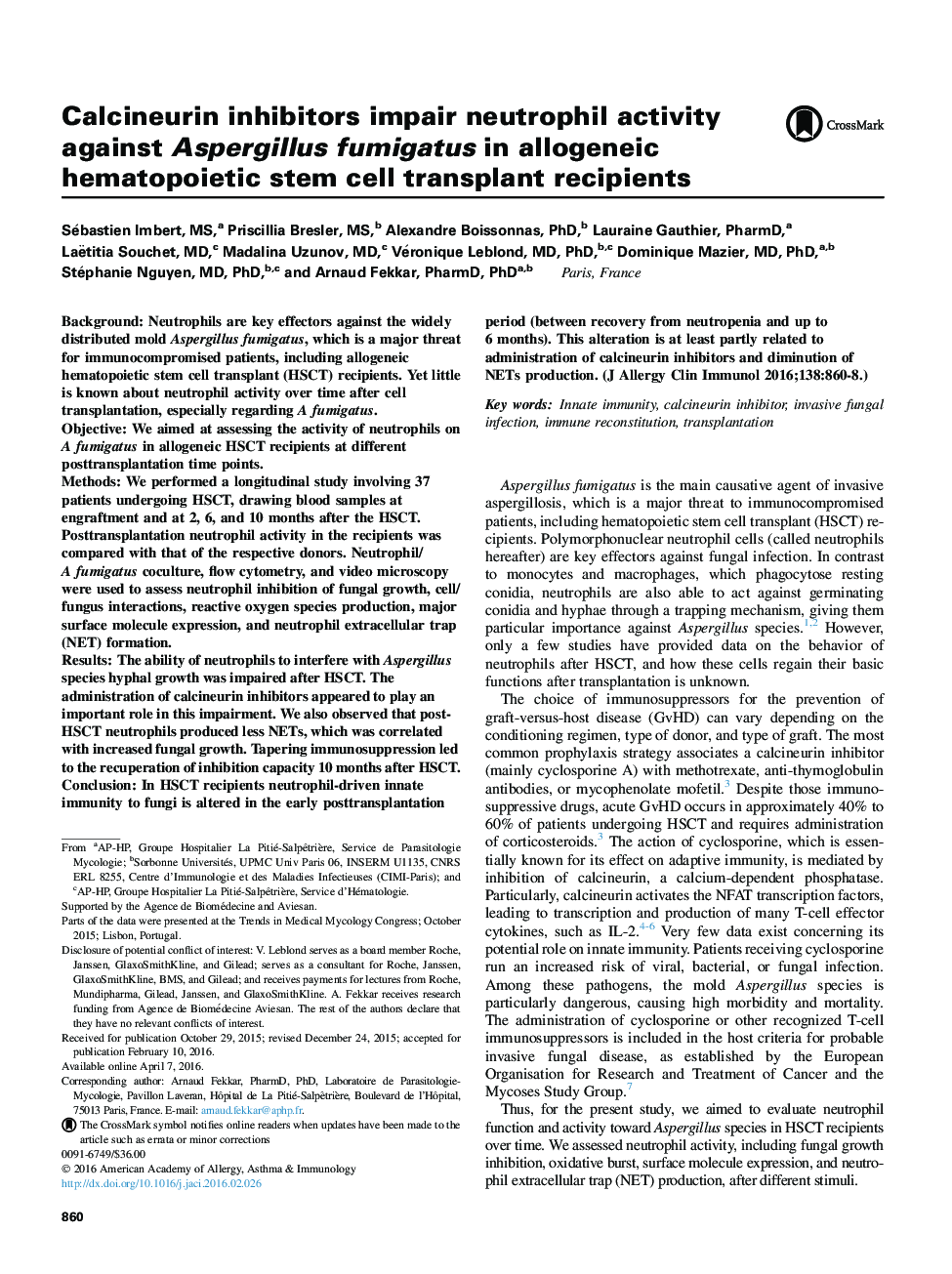| Article ID | Journal | Published Year | Pages | File Type |
|---|---|---|---|---|
| 5646789 | Journal of Allergy and Clinical Immunology | 2016 | 9 Pages |
BackgroundNeutrophils are key effectors against the widely distributed mold Aspergillus fumigatus, which is a major threat for immunocompromised patients, including allogeneic hematopoietic stem cell transplant (HSCT) recipients. Yet little is known about neutrophil activity over time after cell transplantation, especially regarding A fumigatus.ObjectiveWe aimed at assessing the activity of neutrophils on A fumigatus in allogeneic HSCT recipients at different posttransplantation time points.MethodsWe performed a longitudinal study involving 37 patients undergoing HSCT, drawing blood samples at engraftment and at 2, 6, and 10Â months after the HSCT. Posttransplantation neutrophil activity in the recipients was compared with that of the respective donors. Neutrophil/AÂ fumigatus coculture, flow cytometry, and video microscopy were used to assess neutrophil inhibition of fungal growth, cell/fungus interactions, reactive oxygen species production, major surface molecule expression, and neutrophil extracellular trap (NET) formation.ResultsThe ability of neutrophils to interfere with Aspergillus species hyphal growth was impaired after HSCT. The administration of calcineurin inhibitors appeared to play an important role in this impairment. We also observed that post-HSCT neutrophils produced less NETs, which was correlated with increased fungal growth. Tapering immunosuppression led to the recuperation of inhibition capacity 10Â months after HSCT.ConclusionIn HSCT recipients neutrophil-driven innate immunity to fungi is altered in the early posttransplantation period (between recovery from neutropenia and up to 6Â months). This alteration is at least partly related to administration of calcineurin inhibitors and diminution of NETs production.
